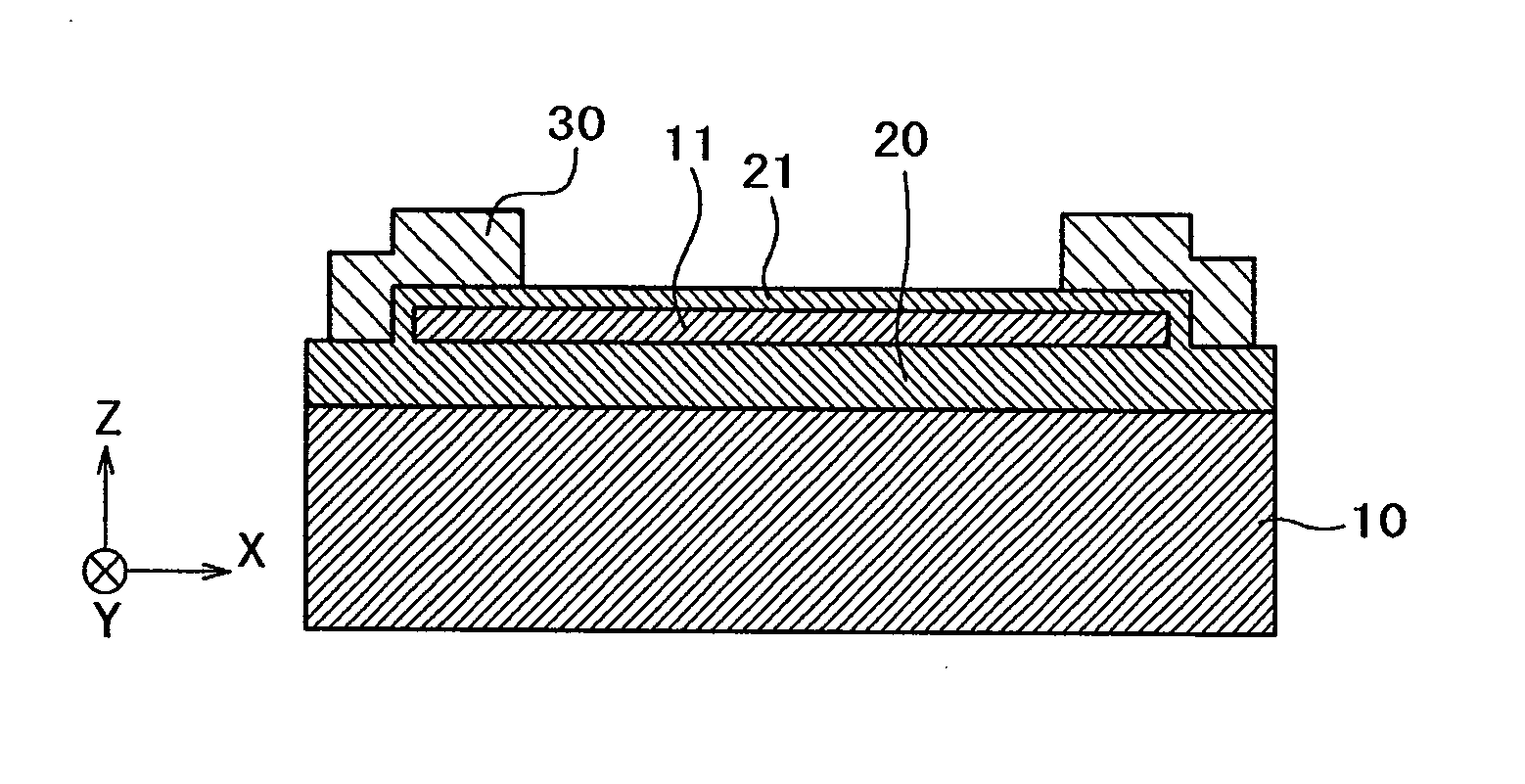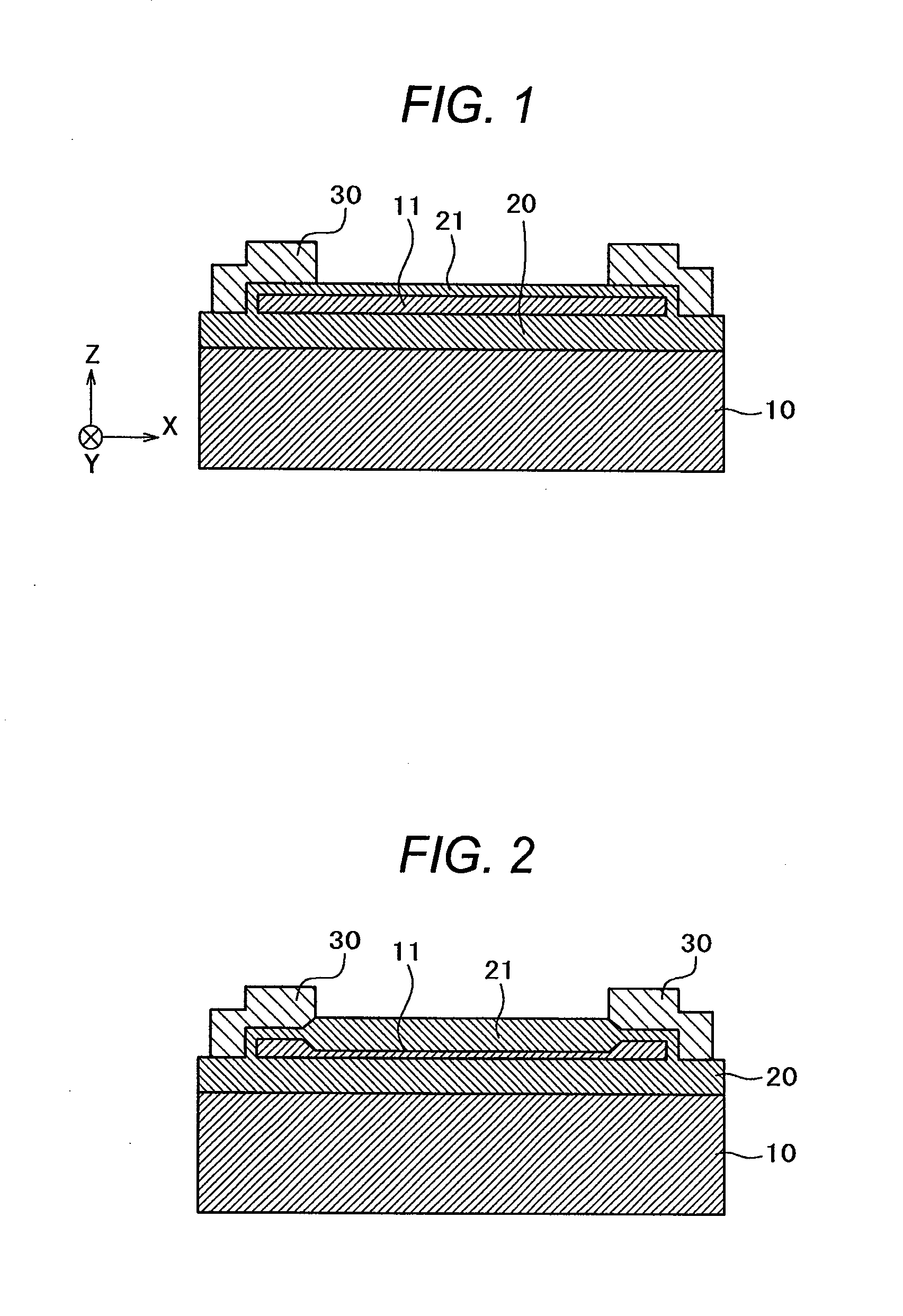Silicon-germanium light-emitting element
a technology of light-emitting elements and silicon-germanium, which is applied in the direction of semiconductor lasers, semiconductor devices, electrical devices, etc., can solve the problems of enormous industrial value, difficult to find out enormous difficulty in the establishment of energy conservation laws, and inability to find enormous difficulties in establishing conservation laws, etc., to achieve easy formation, high luminous efficiency, and low cost of providing light-emitting elements
- Summary
- Abstract
- Description
- Claims
- Application Information
AI Technical Summary
Benefits of technology
Problems solved by technology
Method used
Image
Examples
example 1
[0097]There will be shown a method in which holes are bored on the both ends of the light-emitting region of the silicon thin film light-emitting element of PTL 1 to form the barrier region for the carriers, thereby obtaining the same effects as those in the double hetero-structure.
[0098]FIG. 1 is a schematic cross-sectional view in an xy plane of the structure in the middle of manufacture of the silicon thin film light-emitting element. Suppose that a direction vertical to a surface of a silicon supporting substrate 10 and a silicon thin film 11 is set as a z direction, and a direction (a horizontal direction in the figure) in which a current flows through the silicon thin film after completion is set as an x direction. Also, suppose that a depth direction vertical to the paper is set as a y direction. All of figures including this figure are schematic views and ratios in size, and horizontal to vertical ratios in respective regions are different from those in an actual case.
[0099]...
example 2
[0112]There will now be shown a method in which in the fin silicon light-emitting element shown in PTL 2, constriction structures are formed in both ends of the individual silicon thin films composing the fins, and are made the one-dimensional quantum confinement regions to form the barrier regions, thereby obtaining the same effects as those in the double hetero-structure.
[0113]FIG. 11 shows a finally completed structure of a fin silicon light-emitting element having the constriction structure. A lower figure is a view when viewed from the above of the element, and an upper figure is a cross-sectional view on line A-A′ of the lower figure. However, in the top plan view of the lower figure, for simplicity of the structure, the drawing is made with the silicon oxide film 21 as the protective film being omitted. The silicon oxide film 20 is stacked on the silicon supporting substrate 10, and the silicon thin films 11 are arranged in fins on the silicon supporting substrate 10. The p-t...
example 3
[0127]Although germanium is the indirect transition semiconductor, unlike silicon, the energy level at the point L as the conduction band lowest point, and the energy level at the minimum point which is present at the point T are close to each other. Therefore, if a large amount of electrons are implanted, then, the electrons can be implanted into the point Γ as well. Since the light emission from the point Γ in such a form is obtained in the bulk as well independently of the shape of the element, the germanium light-emitting element may use a thick film. A method is shown in which for this reason the central portions (light-emitting regions) of the individual fins of the fin germanium light-emitting element are thickened, and the end portions to which the electrode are connected are thinned, whereby the barrier regions for the carriers are formed by the quantum confinement effect in the thin portions, thereby obtaining the same effects as those in the double hetero-structure.
[0128]...
PUM
| Property | Measurement | Unit |
|---|---|---|
| wavelength | aaaaa | aaaaa |
| thickness | aaaaa | aaaaa |
| band gap | aaaaa | aaaaa |
Abstract
Description
Claims
Application Information
 Login to View More
Login to View More - R&D
- Intellectual Property
- Life Sciences
- Materials
- Tech Scout
- Unparalleled Data Quality
- Higher Quality Content
- 60% Fewer Hallucinations
Browse by: Latest US Patents, China's latest patents, Technical Efficacy Thesaurus, Application Domain, Technology Topic, Popular Technical Reports.
© 2025 PatSnap. All rights reserved.Legal|Privacy policy|Modern Slavery Act Transparency Statement|Sitemap|About US| Contact US: help@patsnap.com



